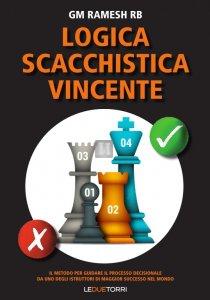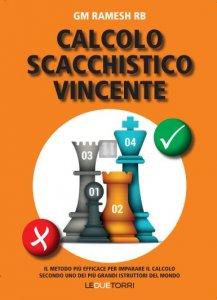Improve your pieces - a winning system you need to know - DOWNLOAD

One of the most effective ways to improve your chess understanding is to know where your pieces belong and how to adapt when the board situation changes. When there’s no forced tactics, one must formulate a plan for what to do. Instead of looking for a win or advantage, it’s often easier to identify a piece that can improve its position and function. Even improving your worst piece is a simple concept that avoids assessment insecurity.
Descrizione
DOWNLOAD VERSION
One of the most effective ways to improve your chess understanding is to know where your pieces belong and how to adapt when the board situation changes. When there’s no forced tactics, one must formulate a plan for what to do. Instead of looking for a win or advantage, it’s often easier to identify a piece that can improve its position and function. Even improving your worst piece is a simple concept that avoids assessment insecurity.
And who better to learn from, than one of the best trainers in the world? RB Ramesh has trained thousands of chess players including the top players in the world. He’s the trainer of rising Indian prodigy Praggnanandhaa, and he helps many improving Indian Juniors attain the highest level. He has carefully selected examples that underline the importance of regrouping your pieces and giving you rules of thumb which are easy to remember.
Video running time: More than 4 hours (English)
Instructive examples
Extra: Database with exercises & Training with ChessBase apps – Play key positions against Fritz on various levels
Contents
Introduction
Identifying passive pieces
Themes
Piece Play: Example 1 - Renet vs Jussopow
Dynamic vs static positions: Example 2 - Karpov vs Schauwecker
Compare and evaluate: Example 3 - Kasparov vs Huebner
Improving a good-looking piece: Example 4 - Klimov vs Fominyh
Activity of the pieces: Example 5 - Miton vs Bulski
Multiple ideas: Example 6 - Kindermann vs Tatai
Identify the worst piece: Example 7 - Short vs Vaganian
The jobless piece: Example 8 - Adams vs Bacrot
Playing on colours: Example 9 - Salgado Lopez vs Caruana
Quiet moves: Example 10 - Karpov vs Spassky
The hidden moves: Example 11 - So vs Heine Nielsen
Dominant piece play: Example 12 - Petrosian vs Gulko
Finding resources: Example 13 - Giri vs Tomashevsky
The art of focusing our pieces: Example 14 - Garcia Martinez vs Pigusov
Conclusion
Practice Positions
Description
Position 1: Vidit vs Roiz, 2018
Position 2: Kasparov vs Beliavsky, 1983
Position 3: Tkachiev vs Ivanov, 2014
Position 4: Wang Hao vs Caruana, 2013
Position 5: Nakamura vs Gelfand, 2012
Position 6: Carlsen vs Mamedyarov, 2014
Position 7: Morozevich vs Shirov, 1999
Position 8: Korchnoi vs Hamann, 1978
Position 9: Polugaevsky vs Petrosian, 1981
Position 10: Nevednichy vs Sideif Sade, 1979
Bonus
Analysis
Exercises
Informazioni
- Marca ChessBase
- Codice S6630
 Italiano
Italiano
 English
English





